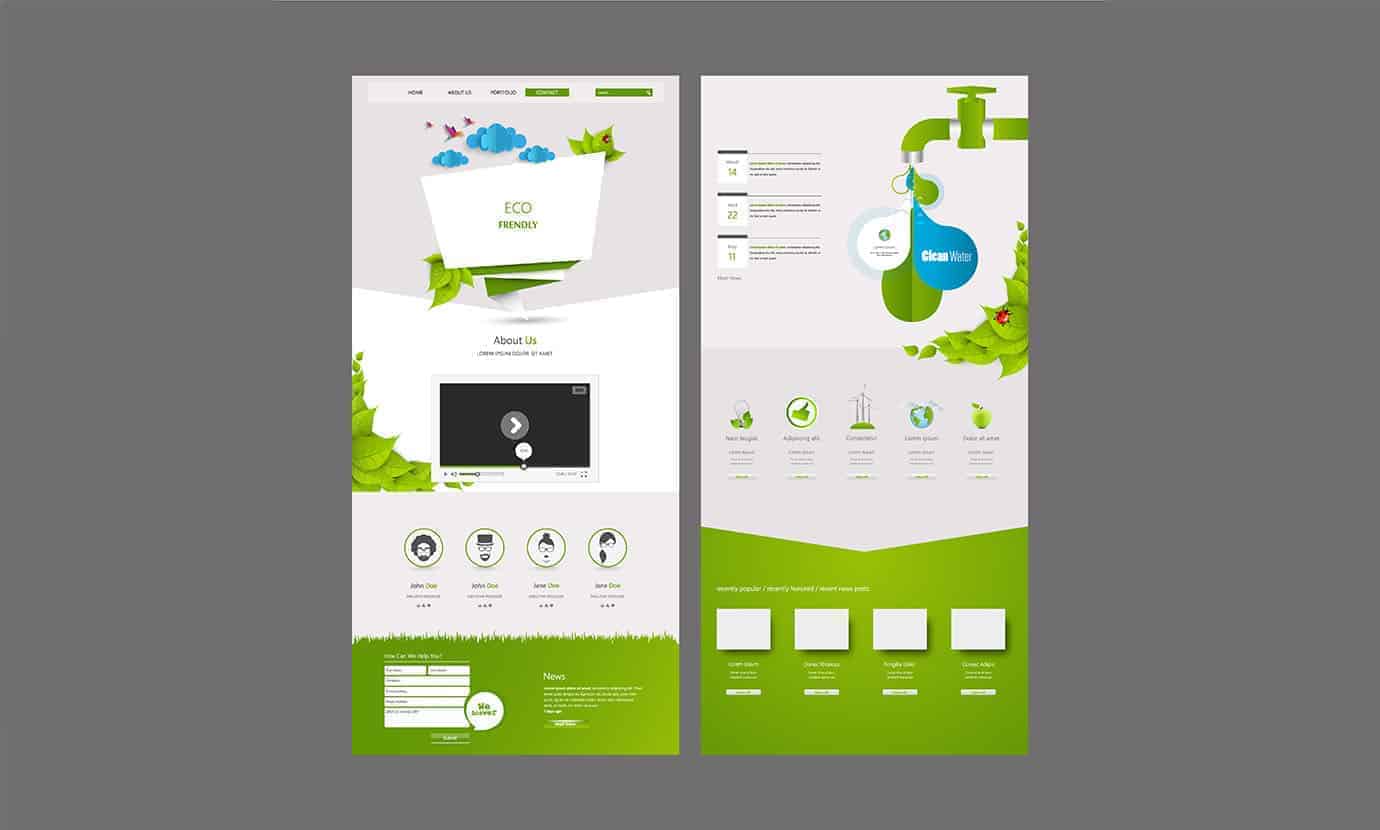Why Website Design is Crucial for SEO and Digital Marketing Success
Why Website Design is Crucial for SEO and Digital Marketing Success
Blog Article
Modern Web Site Style That Records Focus and Transforms
In an increasingly electronic landscape, modern site design has actually emerged as a critical element in capturing user interest and driving conversions. By strategically utilizing aesthetic hierarchy, responsive designs, and involving interactive components, developers can produce experiences that not only draw in visitors however also facilitate purposeful communications. Reliable call-to-action techniques play an essential function in leading individuals toward desired outcomes. As we check out these essential elements, it comes to be clear that understanding their interaction can considerably impact a site's performance and user complete satisfaction. What are the crucial elements that really make a difference?
Relevance of Visual Pecking Order
Aesthetic pecking order is a crucial element in website design, as it guides users' focus and enhances their overall experience. By purposefully arranging content, developers can route users to the most crucial info first, consequently increasing engagement and improving usability.
Including a logical circulation in content setup is vital; as an example, placing the most important info on top of a web page cultivates prompt acknowledgment. In addition, constant usage of typography, such as differing font sizes and styles, assists establish a clear web content framework. This company not only help in navigation but also develops trust fund, as users feel more comfortable when they can quickly discover what they are seeking.
Eventually, a well-executed aesthetic pecking order not only boosts aesthetic allure but also dramatically impacts user behavior. By prioritizing vital components and making sure a smooth experience, developers can successfully transform visitors right into customers, enhancing the importance of this fundamental style concept in contemporary site development.
Responsive Style for All Gadgets
Producing a smooth experience throughout various devices is vital in today's electronic landscape, where customers access sites from desktop computers, smart devices, and tablets alike. Receptive layout is an important technique that ensures internet sites adapt fluidly to different display orientations, sizes, and resolutions. By utilizing flexible grids, pictures, and CSS media queries, developers can create formats that keep visual honesty and capability, regardless of the gadget being used.
The relevance of receptive style extends beyond aesthetics; it straight influences customer involvement and conversion rates. A site that operates well on all tools urges longer brows through and decreases bounce prices, as customers are more likely to engage with web content that is very easy to navigate. Additionally, online search engine, specifically Google, focus on mobile-friendly sites in their positions, making receptive design an important component of search engine optimization (SEO)
Incorporating responsive design not only improves customer experience but additionally enhances the growth procedure. By producing a solitary website that functions across tools, companies can save time and sources contrasted to creating different mobile and desktop variations. Eventually, receptive design is a fundamental approach for contemporary web site layout, guaranteeing access and fulfillment for all customers, despite their device.
Engaging Interactive Elements
While a receptive style prepares for a useful site, including interesting interactive elements is vital for catching user interest and fostering deeper connections. Website Design. Interactive elements, such as computer animations, tests, and clickable infographics, produce a more vibrant user experience, motivating visitors to invest even more time on the website
Integrating interactive functions can also assist customers with complicated info, making it less complicated to absorb web content. Interactive sliders can illustrate item variations, while embedded videos can offer presentations or testimonials that resonate even more than fixed photos or message. Moreover, gamification strategies, like benefits for involving or completing jobs with material, can boost user motivation and retention.
Reliable usage of interactive elements not only enhances the customer experience however can likewise lead to greater conversion prices. It is crucial to balance interactivity with efficiency; overly complicated features may prevent site speed, adversely influencing user complete satisfaction.
Streamlined Navigating Practices
Effective navigating is a cornerstone of any kind of successful internet site, as it directly influences individual experience and content access. Structured navigating techniques guarantee visit homepage that customers can conveniently situate details, improving their communication with the site. A well-structured navigating food selection must be user-friendly and basic, commonly including a minimal variety of main groups to stay clear of overwhelming site visitors.
To achieve structured navigating, designers should focus on a hierarchical framework that realistically arranges content. Executing breadcrumb routes can offer individuals with context regarding their present area within the site, permitting for seamless backtracking. Furthermore, using drop-down menus can properly save room while still giving access to subcategories.
Receptive design is crucial, as navigating needs to be functional throughout all gadgets (Website Design). Mobile individuals, in certain, gain from touch-friendly food selections and collapsible areas that preserve functionality without jeopardizing aesthetic appeals

Effective Call-to-Action Approaches
A well-crafted call-to-action (CTA) is essential for guiding users toward desired end results on an internet site, as it encourages them to involve with material or make an acquisition. To optimize their performance, CTAs must be clear, compelling, and tactically placed throughout the website.
First, utilize action-oriented language that communicates urgency or worth, such as "Get Begun," "Join Currently," or "Claim Your Discount rate." This language not only motivates users but additionally sets clear assumptions about the following steps.
2nd, think about design aspects; CTAs need to attract attention visually via contrasting colors, sufficient whitespace, and noticeable positioning. A switch that is simple to see and click increases the probability of individual interaction.
Additionally, customizing CTAs based upon individual actions or demographics can significantly improve interaction. Customized messages reverberate much more with customers, driving greater conversion prices.

Final Thought
These parts jointly you can find out more enhance user experience, making sure that visitors remain engaged and inspired to check out content better. By prioritizing these style principles, organizations can substantially improve user retention and conversion prices, inevitably leading to higher success in the electronic landscape.
In an increasingly electronic landscape, modern-day site layout has emerged as an essential variable in capturing individual attention and driving conversions.Aesthetic hierarchy is an important aspect in web site design, as it overviews individuals' focus and improves their overall experience.The relevance of receptive design extends beyond aesthetics; it straight impacts individual involvement and conversion prices.Including receptive layout not only enhances customer experience but additionally simplifies the growth process. Eventually, responsive style is a fundamental method for contemporary site design, making sure access and satisfaction for all customers, no matter of their gadget.
Report this page